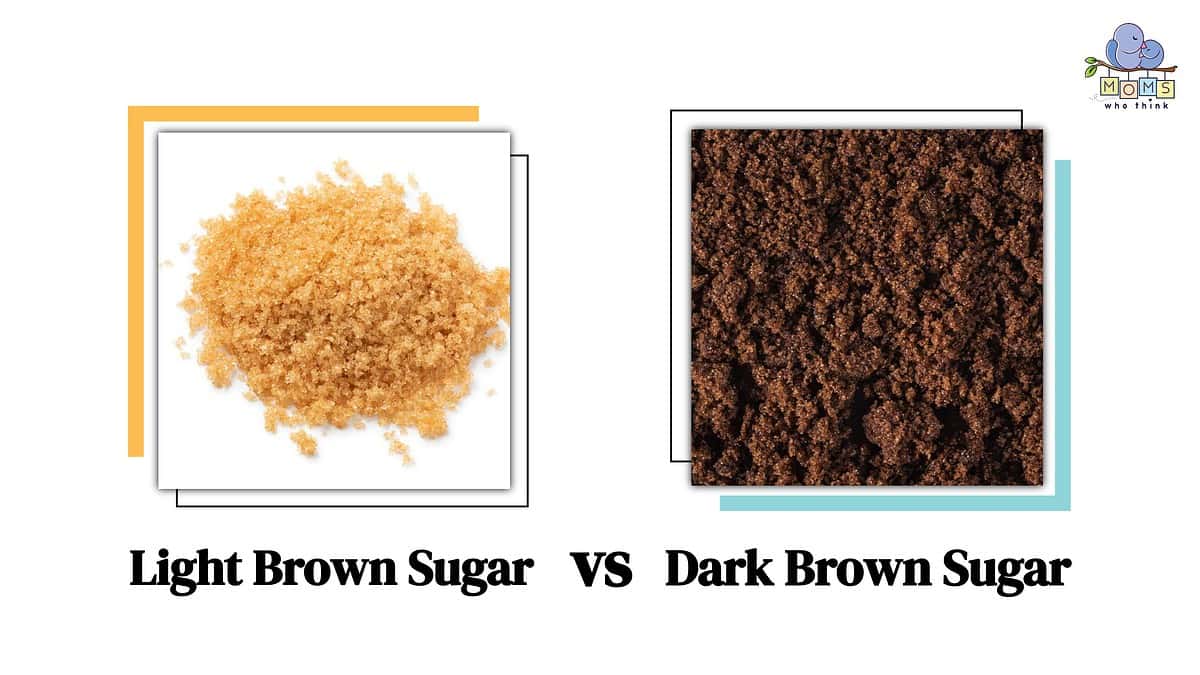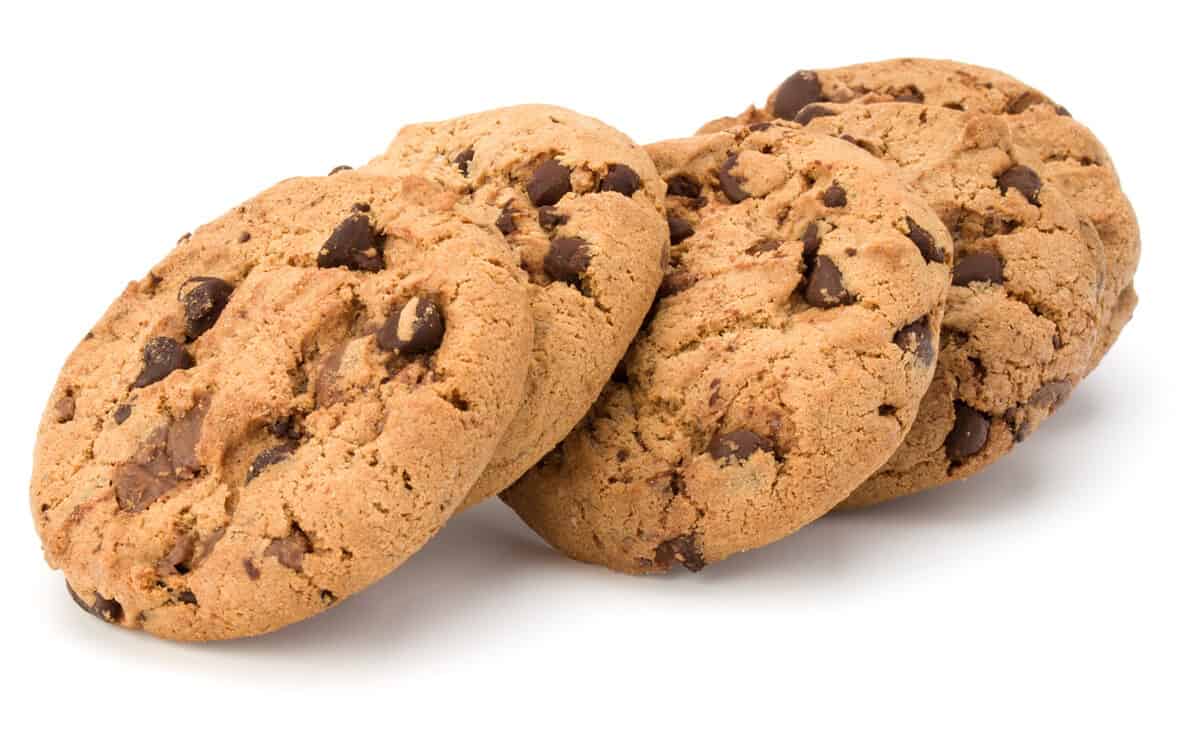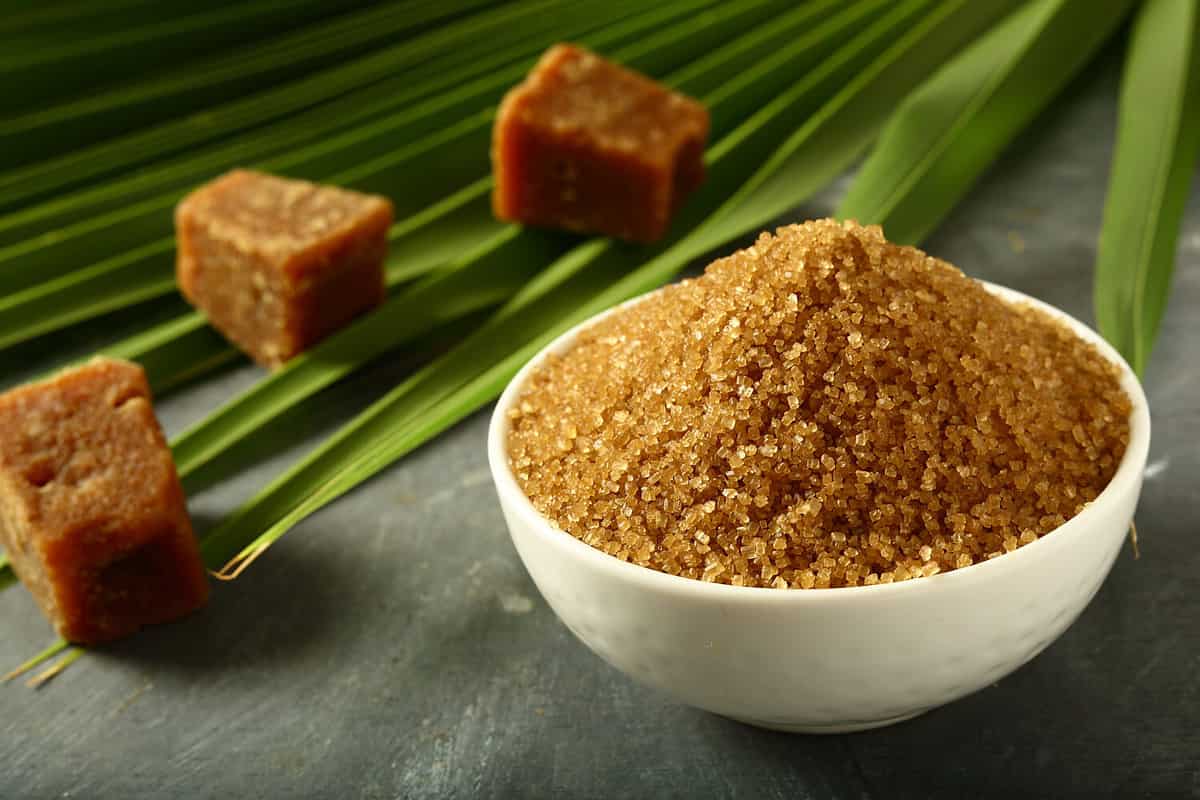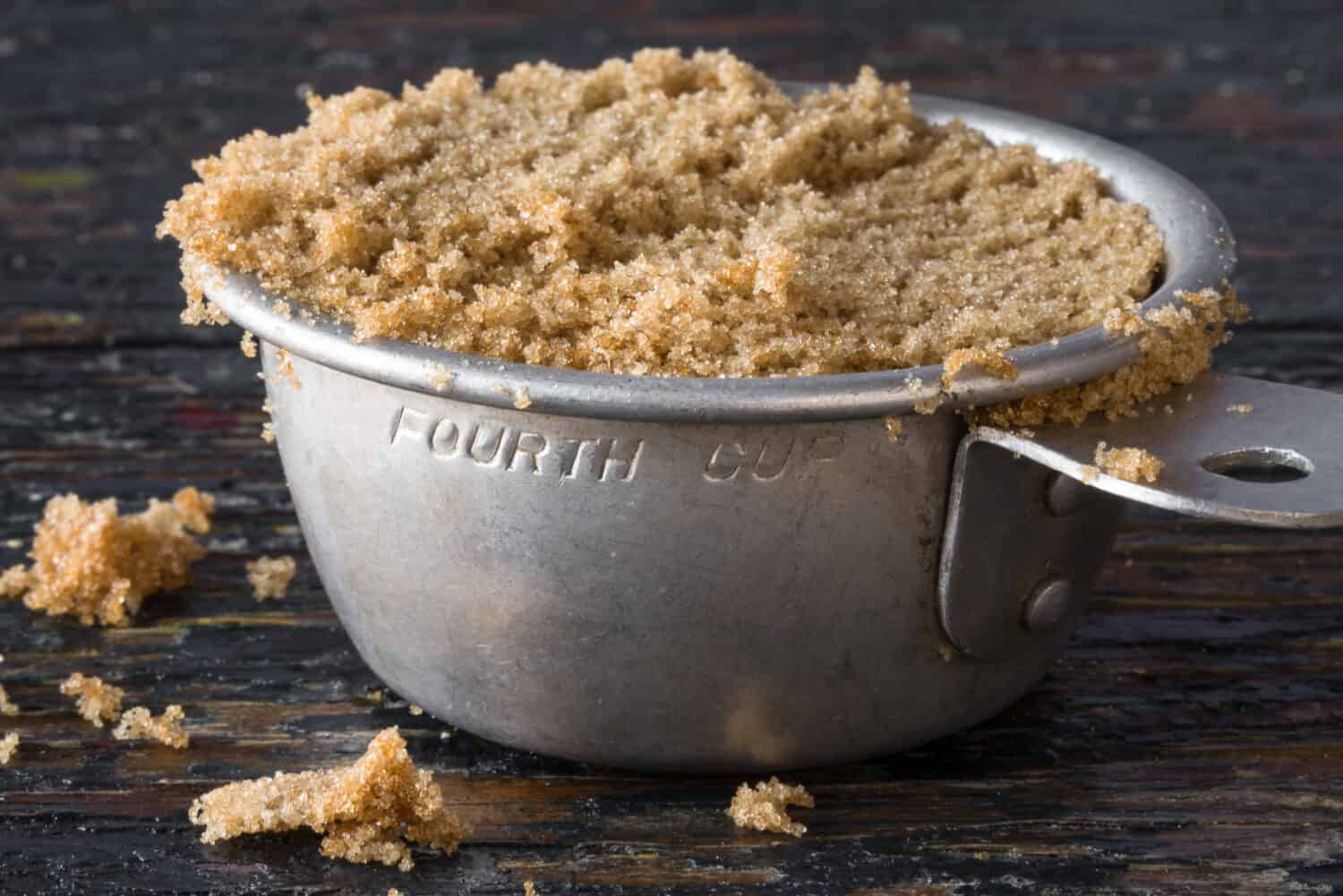Sweet sugar is key to making desserts irresistible. But sugar is in more than just desserts. You can find sugar in condiments, carbonated drinks, and other packaged products. There are eleven different varieties of sugar, including granulated white sugar, caster sugar, confectioners sugar, pearl sugar, sanding sugar, cane sugar, demerara sugar, turbinado sugar, muscovado sugar, light brown sugar, and dark brown sugar. Each sugar has specific uses, and in this article, we will look at the difference between light brown sugar and dark brown sugar, their nutritional differences, and when to use them. When it comes to light brown sugar vs. dark brown sugar, the biggest difference is the amount of molasses each contains.
Light Brown Sugar vs. Dark Brown Sugar

The key difference between the two sugars is the amount of molasses; both light and dark brown sugars are made with white sugar and molasses. Molasses is a dark brown syrup that is a sugar by-product. There are two types of molasses: one is made from sugar cane, and the other is made from sugar beets. Sugar cane molasses is used to make light brown and dark brown sugar. Molasses is made during the sugar refining process. Sugar producers use a centrifuge to spin the sugar, separating the sugar crystals from the molasses. Later, molasses is added back to white sugar, creating light and dark brown sugar. Molasses is most commonly used in baking and is also used to distill rum.
Nutritionally, both light and dark brown sugar are the same, with dark brown sugar containing slightly more vitamins and minerals due to having double the molasses. But the amount is so small it would be difficult to actually benefit from because consuming excess amounts of sugar would make one sick before they could get enough for any health benefits.
Some mistakenly believe that brown sugar is healthier than white sugar, but that is not the case. Healthline explains that brown sugar is not healthier than white sugar, and both sugars should be used in moderation.
What is Brown Sugar?
Brown sugar is white sugar with molasses added to it. The more molasses that is added determines whether the sugar is light brown sugar or dark brown sugar. Dark brown sugar has twice as much molasses, giving it a darker, richer color. Light brown sugar has less molasses, so it is lighter in color and richness. Brown sugar is different from white sugar in its production and use. Brown sugar has the same amount of calories as white sugar but has minimal antioxidant properties due to the added molasses.
Common Uses of Brown Sugar

©Nattika/Shutterstock.com
Brown sugar gives recipes the sweetness with the added complex, rich flavor that the molasses adds. The difference in taste flavor between light and dark brown sugar is minimal, and many recipes call for simply brown sugar, leaving the baker to decide whether to reach for light or dark brown sugar.
Brown sugar is key to making rich, moist baked goods like muffins, cakes, cookies, and puddings. Because of its grainy texture, it is often used on top of fruit-based cobblers, crisps, and crumbles for a sweet, crunchy topping. Brown sugar cookies, oatmeal, and chocolate chip cookies are softer than ones made with white sugar. And cereals like oatmeal, cream of wheat, and granola are excellent with brown sugar added.
But brown sugar isn't just used in desserts and sweets. It can add a complex flavor to savory foods, too. Brown sugar glaze on cooked holiday ham is a popular family favorite. Meatloaf and pork tenderloin are perfect with the addition of brown sugar sauces, glazes, and marinades. Mixing brown sugar with fruit makes an excellent sweet sauce for salty meats like an apricot glaze, perfect for spare ribs. Mixing brown sugar with honey, soy sauce, and garlic creates a sweet and savory sauce that is excellent for chicken, pork, and tofu. Many commercial barbecue sauces utilize brown sugar to balance the smoky, spicy flavor with a touch of sweetness. And you can even find brown sugar in salad dressing and condiments like ketchup and Worcestershire sauce.
Can you Substitute Light and Dark Brown Sugars?
You can substitute light and dark brown sugars for each other. The texture and moisture will be slightly different, as well as the final product's color, but the sweet taste will be almost identical.
However, bakers should avoid substituting white sugar for brown sugar. White sugar is the best recipe for mousses, soufflés, and other fluffy types of desserts. Brown sugar, which is denser and heavier than white sugar, will inhibit the desserts from rising and will ruin the finished dessert.
Natural Brown Sugars

Natural brown sugars are grainier in texture than processed brown sugar.
©SAM THOMAS A/Shutterstock.com
Besides light and dark brown sugar, there are three other types of brown sugars that are often referred to as natural brown sugars. These sugars are usually found in health food stores or international markets.
Turbinado
Turbinado brown sugar is light brown raw sugar that has been processed less than regular brown sugar. It is a grainy sugar that is lighter in color than other brown sugars and has a slight caramel taste. It is often seen in coffee shops in packets where it is labeled as raw brown sugar. However, despite the label, turbinado brown sugar isn't actually raw sugar because it is processed.
Muscovado
Muscovado brown sugar, also called Barbados sugar, is produced in India, parts of South America, and the West Indies. It has a strong aroma and taste of molasses and is a dark, moist sugar. Muscovado sugar has a grainy texture and a slightly bitter caramelized taste. It is not a good substitute for other sugars, and cooks should avoid adding it to recipes that don't specifically call for it because it has such a unique, distinct taste that it will change the taste and texture of the final product. While there are some recipes for baked desserts using this sugar, it is more common in glazes, marinades, and barbecue sauces because of its almost pungent, smoky, sweet taste.
Demerara
Demerara brown sugar is from Guyana, which was previously a British colony called Demerara. The sugar is a golden amber color with a large grainy texture. It is used in baked goods, and you can often find it sprinkled on top of baked goods for a crunchy sweetness. The flavor is less like white sugar and more similar to caramel or toffee. Bakers can substitute demerara for other brown or white sugars in baked goods, but the higher moisture content, meaning the molasses content and larger grains, will alter the baked good outcome.
How to Make Brown Sugar at Home
Making brown sugar at home is easier than you might think. It doesn't take any special skills or tools. Dedicated homebakers can make their own brown sugar with white sugar and molasses. Of course, you can buy brown sugar at the supermarket, but knowing how to make your own is great for those times when you want to bake a favorite dessert and realize you are out of brown sugar.
The recipe is simple for light brown sugar, and you may have all of the ingredients already in your pantry. Start by taking one cup of white sugar and mixing it with one tablespoon of unsulfured molasses. For dark brown sugar, add two tablespoons of unsulfured molasses. Mix with an electric mixer until the clumps are smooth, and store in an air-tight container. Homemade brown sugar will last up to a year in the pantry as long as it is in a sealed container. If it starts clumping, just stir to redistribute the molasses and keep the texture consistent.
This recipe calls for unsulfured molasses because it is sweet and produced from ripe sugarcane. It is free of sulfur dioxide as it isn't needed to preserve it. Many homebakers prefer unsulfured molasses for a true molasses taste.
The image featured at the top of this post is ©Michelle Lee Photography/Shutterstock.com

